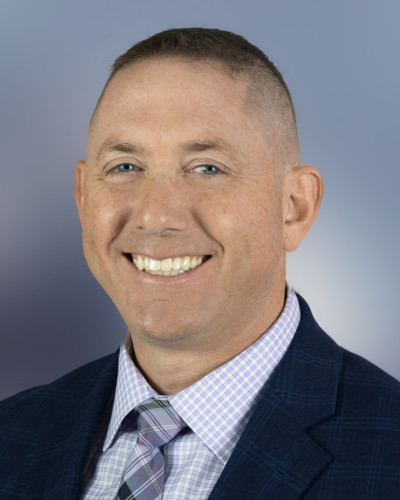Hand, Wrist & Elbow Orthopedics: Doctors, Conditions & Treatments
The hand, wrist and elbow have multiple small joints that work together to produce motion. This gives the fine motion needed to thread a needle or tie a shoelace. The hand is made up of bone, joints, ligaments, tendons, muscles, nerves, skin, and blood vessels. An injury or disease to any of these structures can impair the hand and affect daily activities.
A hand surgeon is trained to diagnose and treat all problems and conditions related to the hand, wrist, and forearm. They receive additional specialized training beyond their board certification in orthopedic surgery. Before joining the American Society for Surgery of the Hand, hand surgeons must have completed a full year of additional training and pass a rigorous certifying examination.
Meet Our Orthopedic Hand, Wrist & Elbow Surgeons
The orthopedic hand, wrist and elbow doctors at Seaview Orthopaedics are your trusted institute for hand, wrist and elbow orthopedics, injuries, and pain. We are committed to providing high-quality specialized hand, wrist and elbow treatments for our patients.
Schedule An Appointment with Our Hand, Wrist & Elbow Specialists
Common Hand, Wrist & Elbow Injuries and Conditions
Wrist anatomy, underlying health conditions, and patterns of hand use can contribute to carpal tunnel syndrome. Key symptoms are pain in the hand and arm with numbness or tingling.
Treatment may include rest, ice, wrist splints, cortisone injections, and surgery.
A condition in which a finger gets stuck in a bent position and then snaps straight.
Trigger finger occurs when the tendon in the affected finger becomes inflamed. Those most at risk include women, people with diabetes or arthritis, and people whose regular activities strain their hands. Symptoms include stiffness, a popping or clicking sensation, and tenderness in the affected finger. Triggering is usually worse in the morning.
Treatment includes splinting, medications, and surgery.
A noncancerous lump, often on the tendons or joints of wrists and hands.
The cause of ganglion cysts is unknown. A ganglion cyst is round, small, and usually painless. Although rare, it can be painful if it presses a nerve. In a few cases, the cyst can interfere with joint movement.
A ganglion cyst often clears on its own. If troublesome, it can be drained or removed.
Tendons are flexible, rope-like tissue that connects muscle to bone. When upper extremity tendons become inflamed and irritated, symptoms of tendonitis, such as pain and discomfort, will be present.
Although symptoms vary from person to person, the most common symptoms of tendonitis are inflammation, swelling and pain with movement. Additional symptoms may include weakness in the joint area and possibly a lump that develops along the tendon.
Treatment for tendonitis is determined by your surgeon. Tendonitis treatment options may include: Occupational/physical therapy, ice, rest and modification of movements, over-the-counter anti-inflammatory medication, splinting or immobilization, steroid injections, or surgery.
An irritation of the tissue connecting the forearm muscle to the elbow.
Tennis elbow can be caused by repetitive wrist and arm motions. Pain is the primary symptom. It usually occurs on the outside of the elbow and sometimes in the forearm and wrist.
Treatment includes rest, pain relievers, and physical therapy.
A fracture is a break in a bone. Most involve a single, significant force applied to normal bone. Your hand, wrist, and elbows can be susceptible to fractures.
In a closed fracture, the overlying skin is intact. In an open fracture, the overlying skin is disrupted and the broken bone is in communication with the environment.
Tears may be graded as 1st degree: Minimal (fibers are stretched but intact, or only a few fibers are torn), 2nd degree: Partial (some to almost all fibers are torn), 3rd degree: Complete (all fibers are torn)
Treatments include: Treatment of associated injuries, reduction as indicated, splinting, and analgesia, RICE (rest, ice, compression, and elevation) or PRICE (including protection) as indicated, usually immobilization, and sometimes surgery.
Nerves are the body’s “telephone wiring” system that carries messages between the brain and the rest of the body. Some nerves carry messages from the brain to muscles to make the body move. Other nerves carry messages about pain, pressure, or temperature from the body to the brain. Many small fibers are bundled inside each nerve to carry the messages. There is an outer layer that insulates and protects the nerves. Sometimes, nerves can be damaged.
- Mild injuries to the nerve: The nerve can repair itself, either within minutes or after a number of weeks. During this time, messages between the brain and body can be altered. Supportive treatment often helps, but in some cases surgery is needed.
- Broken nerve fibers or more severe injuries: The nerves can grow back to their muscle or skin areas, but this process can take several months, and the messages between the brain and body will stop until the nerves grow. Treatment may be supportive care, but surgery may be needed depending on the type of injury.
- Cut nerve: When both the nerve outer wrap and inner fibers of the nerve are cut, surgery is typically needed to allow the nerve to heal correctly.
Flexor Tendons are the muscles that bend (flex) the fingers are called flexor muscles. These flexor muscles move the fingers through cord-like extensions called tendons, which connect the muscles to bone.
Extensor Tendons are just under the skin. They lie next to the bone on the back of the hands and fingers and straighten the wrist, fingers and thumb.
Tears caused by jamming injuries are usually treated with splints. Other treatment may include stitches (for cuts in the tendon). Also, a pin may need to be placed through the bone across the joint as an internal splint. Surgery to free scar tissue is sometimes helpful in cases of severe motion loss. After treatment, therapy may be necessary to improve motion.
Congenital limb difference is when a baby is born missing all or part of the upper and/or lower limbs. It is sometimes due to amniotic band syndrome – where the amniotic band, a fibrous string-like structure, restricts blood flow and affects the development of a limb. Sometimes there is a genetic link or an association with another illness.
Some children will need surgery and other children will not. Surgery is sometimes necessary for children with leg differences so that an artificial limb (prosthesis) can be fitted when your child gets older. It is less common for surgery to be required for children with arm differences. Each child is different and different surgical options are offered on an individual basis.
Mallet finger, also known as drop finger or baseball finger, is an injury to the tendon that helps straighten the tip of your finger. Instead of fully extending, the tip of the affected finger remains bent inward towards the palm. When describing the injury, patients typically state that they jammed their finger and can no longer completely straighten it. Even a small amount of force, such as jamming your finger while tucking in a bed sheet, can cause this condition to develop. Any activity that causes an impaction injury to the tip of the finger can result in mallet finger.
Cubital tunnel syndrome is the compression of the ulnar nerve. This nerve starts in the neck, wraps around the inside of the elbow traveling through a tunnel known as the cubital tunnel, then travels into the forearm and the hand. The ulnar nerve provides feeling in the small finger and half of the ring finger. It also gives you grip and pinch strength, allows you to bend your small and ring fingers, and allows you to open and close your fingers. The ulnar nerve can be compressed in several places including your hand, but is most commonly compressed at the elbow due to the narrow space that it has to travel through at the elbow.
Dupuytren’s Disease is a proliferative soft tissue condition of the palm of the hand and fingers. It affects the fascia, which is a soft tissue layer that lies right below the skin and helps anchor or stabilize the skin in the palm. This fascia thickens causing lumps or nodules and rope-like cords to develop in the palm of the hand and fingers. Over time, these cords can tighten and cause the fingers to bend down towards the palm resulting in “Dupuytren’s contracture.” The contracture prevents people from straightening their fingers and affects their grip. Not everyone who has Dupuytren’s Disease develops these contractures in their fingers. However, the disease progresses slowly over years and in certain people it can lead to severe contractures. These contractures can prevent patients from doing daily activities and simple tasks like putting on gloves or even shaking someone’s hand. Unfortunately, there is no cure for Dupuytren’s Disease. However, there are several treatment options to help straighten the fingers and improve hand motion and function.
Seaview’s hand, wrist and elbow surgeons also treat non-operatively. They often recommend non-surgical treatments, such as medication, splints, physical therapy, or injections.
Schedule An Appointment with Our Hand, Wrist & Elbow Specialists
Detailed Illustrations of Hand & Wrist Symptoms and Treatments
Detailed Illustrations of Elbow Symptoms and Treatments
Schedule an Appointment with Our Seaview Orthopaedics Hand, Wrist & Elbow Specialists in NJ
At Seaview Orthopaedic & Medical Associates, we have provided quality orthopedic care for over 30 years! Our patients’ total experience with our practice is our number one priority. If you have been suffering from any kind of hand, wrist or elbow pain, be sure to schedule an appointment with one of our doctors at one of our six orthopedic clinics throughout NJ. To learn more feel free to contact us online.





